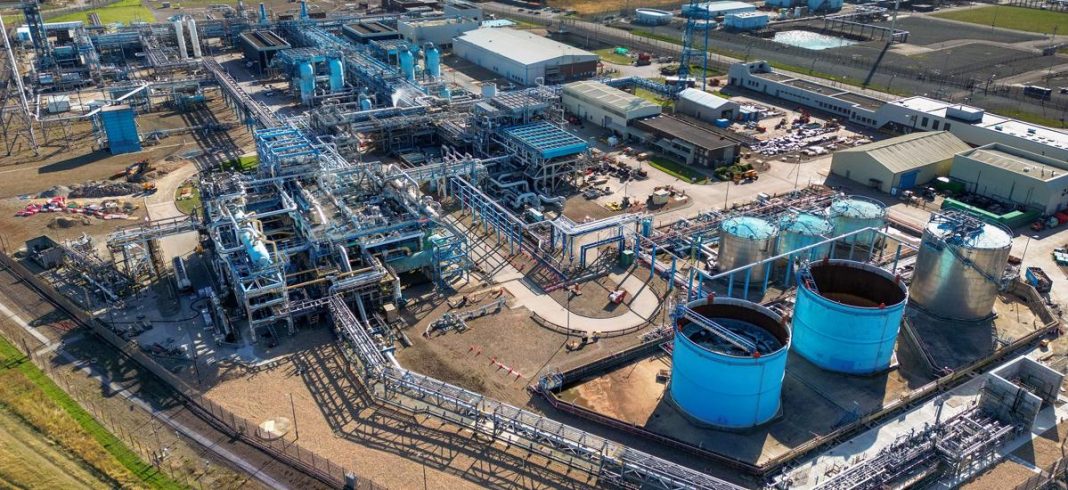Centrica and Equinor have signed a co-operation agreement to explore developing a low-carbon hydrogen production hub at Easington in East Yorkshire, further strengthening the region’s growing status as the UK’s foremost hydrogen super place.
Under the co-operation plan, the Centrica-operated area at Easington could transition to a low carbon hydrogen production hub over the coming decade. This would support the Humber’s decarbonisation ambitions and help the UK meet its Net Zero goals and hydrogen production targets. Such a transition would also safeguard many of the existing jobs within this historical gas terminal whilst creating new jobs for the future.
Currently up to one third of the UK’s total gas supply enters via Easington, much of it from Equinor’s Norwegian facilities. Easington is also situated close to some of the world’s largest offshore wind farm developments, offering huge potential for both blue and green hydrogen production.
Grete Tveit, Senior Vice President for low carbon solutions at equinor says “Partnering with Centrica to potentially develop a new hydrogen hub at one of the uk’s most significant industrial sites could help to transform this region’s energy mix whilst preserving and creating jobs and skills”
The area is also earmarked as one of the landing point for the east coast cluster’s carbon capture pipeline, which would transport co2 for safe storage deep under the seabed. as such, it is a key location within the zero carbon Humber Partnership which is planned to provide regional hydrogen and co2 pipelines between the area’s major energy producers and carbon intensive industries. as the uk’s most carbon intensive industrial region, such low carbon projects and infrastructure are vital to tackling climate change whilst future-proofing key industries and creating new jobs.
In response to the ongoing energy crisis, Centrica have secured licences and consents to use Rough to strengthen the UK’s security of natural gas supply in the near term. Centrica is advancing plans to convert its Rough offshore gas storage facility for hydrogen storage as part of its transition to a net zero future.
The UK government recently doubled its 2030 hydrogen production ambition to 10GW capacity, with at least half coming from electrolytic ‘green’ hydrogen. Equinor has ambitions to deliver nearly one fifth of this national target by generating 1.8GW of hydrogen production within the Humber region by 2028, beginning with its flagship H2H Saltend project. Centrica and Equinor expect that the conversion of the Easington Terminal could produce an additional 1GW of low carbon hydrogen production coupled with the around 200MW off-taker demand.
Grete Tveit, Senior Vice President for Low Carbon Solutions at Equinor, said: “The Humber is in a unique position to lead the way on industrial decarbonisation, with Equinor’s Hydrogen to Humber (H2H) projects at the forefront of this transition. Partnering with Centrica to potentially develop a new hydrogen hub at one of the UK’s most significant industrial sites could help to transform this region’s energy mix whilst preserving and creating jobs and skills.”
Chris O’Shea, Centrica CEO adds: “We are delighted to be working in partnership with Equinor to explore opportunities to deliver on our commitments to help the UK transition to net zero as hydrogen will play a key role in achieving this. This exciting project builds on the long-standing partnership between Centrica and Equinor and follows on from our recent agreement to secure additional gas for our UK customers. Like Equinor, Centrica are committed to investing in the Humber region, levelling up and de-carbonising industry to create a world leading, green energy driven, economic hub.”
Mike Whitehead, President of the Hull & Humber Chamber of Commerce says: “Its fantastic to see these two major energy companies seeking to invest and explore ground-breaking projects in this region, demonstrating our long-standing reputation as the UK’s Energy Estuary. Over the coming decades we will need this level of ambition to transition away from fossil fuels whilst creating jobs, boosting skills and attracting inward investment.”



